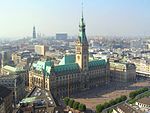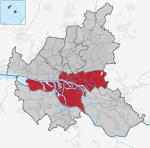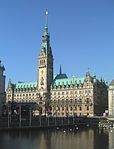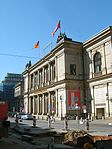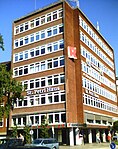Max Planck Institute for Meteorology
Buildings and structures in EimsbüttelHamburg building and structure stubsMax Planck InstitutesMeteorological research institutesOrganisations based in Hamburg ... and 2 more
Scientific organization stubsUniversity of Hamburg

The Max Planck Institute for Meteorology (Max-Planck-Institut für Meteorologie; MPI-M) is an internationally renowned institute for climate research. Its mission is to understand Earth's changing climate. Founded in 1975, it is affiliated with the Max Planck Society and the University of Hamburg, and is based in Hamburg's district of Eimsbüttel. Its founding director was the Nobel laureate Klaus Hasselmann. The current managing director is Bjorn Stevens.
Excerpt from the Wikipedia article Max Planck Institute for Meteorology (License: CC BY-SA 3.0, Authors, Images).Max Planck Institute for Meteorology
City Hall Marketplace, Hamburg Altstadt
Geographical coordinates (GPS) Address Nearby Places Show on map
Geographical coordinates (GPS)
| Latitude | Longitude |
|---|---|
| N 53.5506 ° | E 9.9933 ° |
Address
Heinrich-Heine-Denkmal
City Hall Marketplace
20095 Hamburg, Altstadt
Germany
Open on Google Maps
